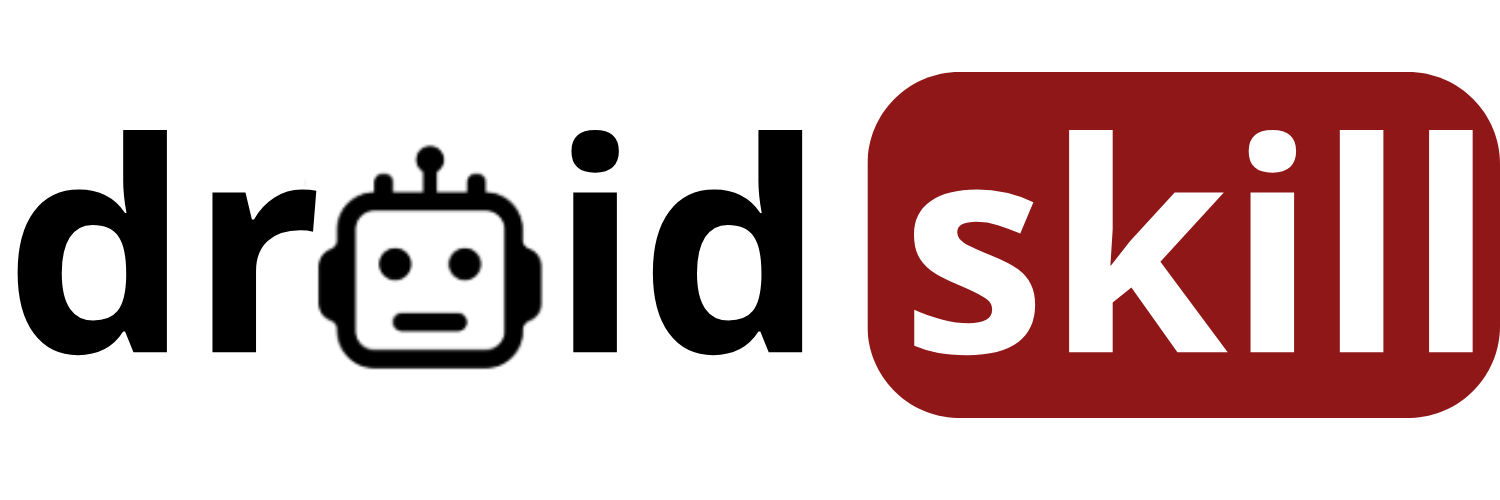Switching from Android to iOS can seem daunting, but with the right preparation and tools, it can be a smooth and even enjoyable experience. This guide will walk you through the essential steps to ensure a stress-free transition, covering everything from backing up your data to familiarizing yourself with the iOS ecosystem. We'll also highlight some fantastic apps to help you along the way.
Before You Begin: Preparation is Key
Before you even think about touching your new iPhone, take some time to prepare. This involves backing up your data from your Android device and understanding the key differences between the two operating systems. A little planning goes a long way in preventing headaches later on.
1. Back Up Your Android Data:
This is the most crucial step. You don't want to lose your precious photos, contacts, messages, and other important data. Here's how to back up the essentials:
- Contacts: Most Android phones sync contacts with your Google account. Ensure syncing is enabled in your phone's settings. You can also export your contacts as a .vcf file for extra security.
- Photos and Videos: Google Photos is an excellent option for backing up your media. It offers free storage (with some limitations) and automatically syncs your photos and videos to the cloud. Alternatively, you can manually copy your files to a computer or external storage device.
- Messages: SMS Backup & Restore is a popular app for backing up your text messages. It allows you to save your messages as an XML file, which can then be restored to your iPhone.
- Calendar: Similar to contacts, your calendar events are likely synced with your Google account. Ensure syncing is enabled.
- Other Files: For documents, music, and other files, you can use cloud storage services like Google Drive, Dropbox, or OneDrive. Alternatively, you can connect your Android phone to your computer and manually copy the files.
2. Understand the iOS Ecosystem:
iOS is different from Android in many ways. Take some time to familiarize yourself with the key differences:
- App Store vs. Google Play Store: The App Store is Apple's official app store. While many apps are available on both platforms, some are exclusive to iOS.
- iCloud vs. Google Services: iCloud is Apple's cloud storage service. It's used for backing up your data, syncing files, and more.
- User Interface: iOS has a different user interface than Android. Spend some time exploring the settings and getting used to the navigation.
- Siri vs. Google Assistant: Siri is Apple's voice assistant. It can perform tasks like setting reminders, sending messages, and making calls.
Making the Switch: Step-by-Step Guide
Now that you've prepared your data and familiarized yourself with iOS, it's time to make the switch. Here's a step-by-step guide:
1. Set Up Your iPhone:
Follow the on-screen instructions to set up your new iPhone. You'll be prompted to connect to Wi-Fi, create an Apple ID, and configure other settings.
2. Use the Move to iOS App:
Apple provides a dedicated app called 1. Move to iOS to help you transfer data from your Android device to your iPhone. This app is available for free on the Google Play Store.
Here's how to use it:
a. Download and install the Move to iOS app on your Android device.
b. On your iPhone, during the setup process, choose Move Data from Android.
c. On your Android device, open the Move to iOS app and follow the on-screen instructions.
d. A code will appear on your iPhone. Enter this code on your Android device.
e. Select the data you want to transfer (contacts, messages, photos, etc.) and wait for the process to complete.
The Move to iOS app is designed to transfer a variety of data types, including contacts, message history, camera photos and videos, web bookmarks, mail accounts, and calendars. It also attempts to match free apps you have installed on your Android device with their iOS counterparts, adding them to your App Store download queue. This streamlines the process of rebuilding your app library on your new iPhone.
Download Move to iOS from the Play Store
Search for Move to iOS on Play Store
3. Transfer Data Manually (If Needed):
While the Move to iOS app is helpful, it may not transfer all of your data. You may need to transfer some data manually.
- Contacts: If you didn't use the Move to iOS app, you can import your contacts from your Google account or a .vcf file. Go to Settings > Contacts > Accounts > Add Account > Google and sign in to your Google account. Alternatively, you can email the .vcf file to yourself and open it on your iPhone to import the contacts.
- Photos and Videos: If you used Google Photos, simply download the Google Photos app on your iPhone and sign in to your Google account. Your photos and videos will be synced to your iPhone. Alternatively, you can copy the files from your computer to your iPhone using iTunes or iCloud Drive.
- Messages: Unfortunately, there's no official way to transfer SMS messages from Android to iOS. However, some third-party apps claim to be able to do this, but they may require jailbreaking your iPhone, which is not recommended.
- Other Files: You can use cloud storage services like Google Drive, Dropbox, or OneDrive to transfer documents, music, and other files to your iPhone.
4. Download Your Favorite Apps:
Head to the App Store and download your favorite apps. Many of the apps you used on Android are also available on iOS. You may need to purchase some apps again, as app licenses are not transferable between platforms.
5. Explore iOS Features:
Take some time to explore the features of iOS. Here are a few things to check out:
- Control Center: Swipe down from the top-right corner of the screen to access the Control Center, which provides quick access to settings like Wi-Fi, Bluetooth, and brightness.
- Notification Center: Swipe down from the top-left corner of the screen to access the Notification Center, which displays your notifications.
- Siri: Press and hold the side button to activate Siri. You can use Siri to perform tasks like setting reminders, sending messages, and making calls.
- iCloud: Go to Settings > [Your Name] > iCloud to manage your iCloud settings.
Apps to Make the Switch Easier
Besides the Move to iOS app, several other apps can help you make the switch from Android to iOS easier.
2. Google Photos:
As mentioned earlier, Google Photos is an excellent option for backing up and syncing your photos and videos. It's available on both Android and iOS, making it easy to access your media on both platforms. Google Photos offers a seamless way to keep your memories safe and accessible, regardless of the device you're using. Its automatic backup feature ensures that your photos and videos are always protected, and its powerful search capabilities make it easy to find specific moments.
Download Google Photos from the Play Store
Search for Google Photos on Play Store
3. Google Drive:
Google Drive is a cloud storage service that allows you to store and access your files from anywhere. It's available on both Android and iOS, making it easy to transfer documents, music, and other files between platforms. Google Drive provides a convenient way to keep your files organized and accessible, whether you're working on a computer, tablet, or smartphone. Its collaboration features also make it easy to share files with others and work together on projects.
Download Google Drive from the Play Store
Search for Google Drive on Play Store
4. WhatsApp:
If you use WhatsApp for messaging, you can easily transfer your chats from Android to iOS. WhatsApp provides a built-in feature for transferring your chat history, media, and other data. WhatsApp is a popular messaging app that allows you to communicate with friends and family around the world. Its end-to-end encryption ensures that your messages are private and secure, and its wide range of features, including voice and video calls, make it a versatile communication tool.
Download WhatsApp from the Play Store
Search for WhatsApp on Play Store
5. Spotify:
If you're a Spotify user, you can easily access your music library on your new iPhone. Simply download the Spotify app and sign in to your account. Spotify is a music streaming service that gives you access to millions of songs, podcasts, and other audio content. Its personalized playlists and recommendations make it easy to discover new music, and its offline playback feature allows you to listen to your favorite songs even when you're not connected to the internet.
Download Spotify from the Play Store
Search for Spotify on Play Store
Tips for a Smooth Transition
Here are a few additional tips to help you make the switch from Android to iOS as smooth as possible:
- Charge Both Devices: Make sure both your Android device and your iPhone are fully charged before starting the transfer process.
- Connect to Wi-Fi: Ensure both devices are connected to a stable Wi-Fi network.
- Be Patient: The transfer process can take some time, depending on the amount of data you're transferring. Be patient and don't interrupt the process.
- Explore iOS Settings: Take some time to explore the iOS settings and customize your iPhone to your liking.
- Ask for Help: If you're having trouble with the switch, don't hesitate to ask for help from Apple Support or online forums.
Addressing Common Concerns
Many users have concerns about specific aspects of switching from Android to iOS. Let's address some of the most common ones:
1. App Compatibility:
While most popular apps are available on both Android and iOS, some apps may be exclusive to one platform or the other. Before switching, check if your essential apps are available on iOS. If not, look for alternative apps that offer similar functionality.
2. Data Security:
Apple is known for its strong focus on data security and privacy. iOS has several built-in security features, such as encryption and sandboxing, to protect your data. However, it's still important to practice good security habits, such as using strong passwords and being careful about which apps you install.
3. Learning Curve:
iOS has a different user interface than Android, so there may be a learning curve involved in switching. However, iOS is generally considered to be user-friendly and intuitive. With a little practice, you'll quickly get used to the new interface.
4. Cost:
iPhones are generally more expensive than Android phones. However, the cost of switching also includes the potential need to repurchase some apps. Consider the overall cost of switching before making the decision.
5. Customization:
Android is known for its high level of customization. iOS is less customizable, but it still offers some options for personalization. If you're heavily reliant on Android's customization features, you may need to adjust your expectations when switching to iOS.
Conclusion
Switching from Android to iOS can be a rewarding experience. By following the steps outlined in this guide and addressing any potential concerns, you can ensure a smooth and stress-free transition. Remember to back up your data, familiarize yourself with the iOS ecosystem, and explore the features of your new iPhone. With a little preparation and patience, you'll be enjoying your new iOS device in no time.
Ultimately, the decision to switch from Android to iOS is a personal one. Consider your needs, preferences, and budget before making the switch. If you're looking for a secure, user-friendly, and well-supported mobile platform, iOS may be the right choice for you.


